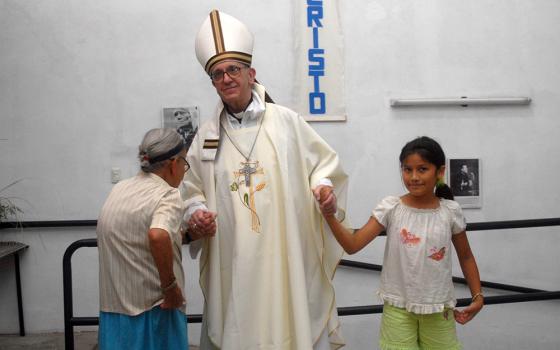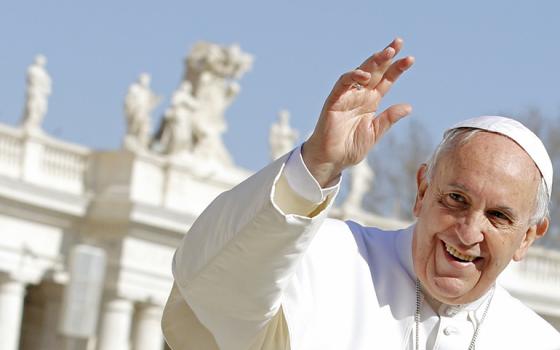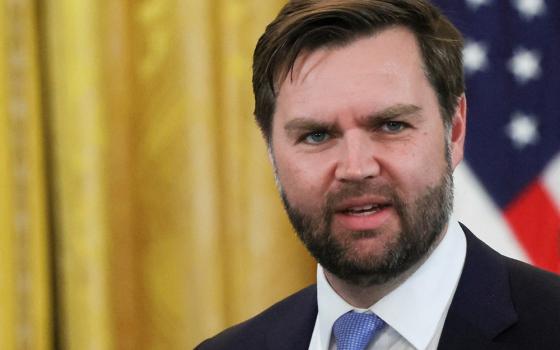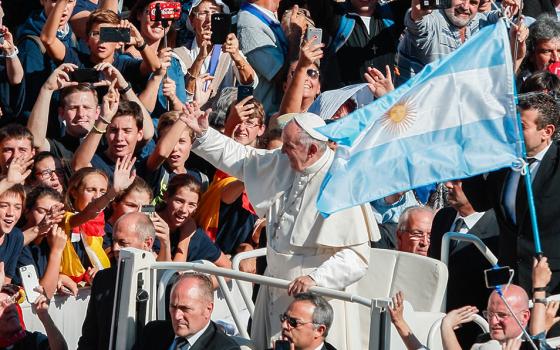Pope Francis stops in prayer before the icon "Salus Populi Romani" ("health — or salvation — of the Roman people") after praying the rosary for peace in Rome's Basilica of St. Mary Major Oct. 6, 2024. Francis died April 21, 2025, at age 88, and will be entombed in the basilica. (CNS/Vatican Media)
Each year on Aug. 5 the church liturgical calendar commemorates the dedication of St. Mary Major (in Italian, Santa Maria Maggiore), one of the five great ancient basilicas in Rome, and the place Pope Francis chose to be entombed. Why would that event be a feast day for the universal church? What is our connection to the dedication of a building that took place in Italy over 1,500 years ago?
The history of this church is rooted in the role of Mary as the Mother of God. Its story begins with a fourth-century legend.
According to this legend, living in Rome around the year A.D. 350 was a wealthy and childless couple who, upon their death, wanted their earthly possessions used in a way that would honor the Virgin Mother. They prayed earnestly for divine guidance. Mary appeared to the husband in a dream, requesting that a church be built for her on a site where snow would fall in midsummer.
The couple quickly reported Mary's request to Pope Liberius (reigned 352-366), who claimed to have had a similar dream. On Aug. 5, at the height of the summer heat, snow miraculously fell on an area of Rome called Esquiline Hill, defining the floor plan of the church.
Here, the legend concludes, was built one of the earliest Christian churches in honor of the Virgin Mary. It was called the Liberian Basilica after Liberius.
Archaeological and other evidence suggests that the legend has no historical basis. No mention whatsoever is made of the story until several hundred years later; even the dedicatory inscription of Pope St. Sixtus III, placed on the church in the fifth century, says nothing about it.
Nevertheless, this basilica, rebuilt and magnificently adorned over the centuries, has been a rallying point for popes and laypeople, for Romans and pilgrims alike, to venerate the maternity and life of the Blessed Mother.
Extensive reconstruction and expansion of the original basilica took place following the ecumenical Council of Ephesus held in 431. That assembly was called specifically to settle a controversy regarding Mary's title as the Mother of God.
Nestorius, who had become the patriarch (archbishop) of Constantinople in 428, had used his prominent position to preach the heretical doctrine that Mary was only the Mother of Christ ("Christotokos"), not the Mother of God ("Theotokos"; literally, "God-bearer").
He and others claimed that there were two separate persons, one human and one divine, within Jesus Christ; and that the human person born of Mary — who was crucified, died, buried and resurrected — was not divine.
Consequently, Nestorius and his followers argued that Mary could not be called "Mother of God," because she was the mother only of the human person in Jesus, not the divine Person.
Leading the opposition to the Nestorian heresy was St. Cyril, patriarch of Alexandria, Egypt. Cyril helped to clarify the church's understanding that Jesus is not two persons. Rather, he was born one person in whom are united two natures, one fully human and one fully divine. That one person is the divine, eternal Son of God.
When Mary gave birth to the Word made flesh, she was giving birth to that one divine Person in two natures. Accordingly, Mary is rightfully called the Mother of God.
This controversy was brought to a head at the council in Ephesus during June and July 431. Nearly 200 bishops gathered there. They deposed Nestorius and declared that Mary is truly the Mother of God.
Advertisement



